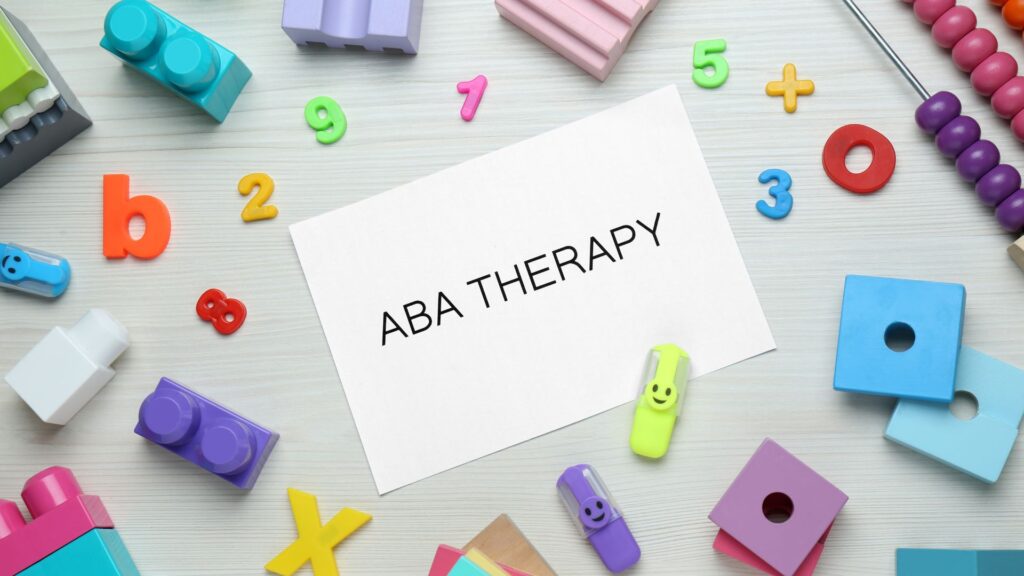Autism spectrum disorder (ASD) is a diverse and multifaceted developmental condition that affects many families across the globe in different yet often distinct ways. Among the various interventions for autism, applied behavior analysis (ABA) stands out as a research-backed model that can significantly enhance daily life and increase independence in many on the spectrum. Behavioral researchers Baer, Wolf, and Risley discussed these seven core dimensions of ABA in 1968 in the Journal of Behavior Analysis. The dimensions are:
- Generality
- Effective
- Technological
- Applied
- Conceptually Systematic
- Analytic
- Behavioral
These essential ABA dimensions all function to ensure optimal learning and favorable developmental outcomes in those receiving ABA care with autism.
This in-depth exploration of the seven dimensions of applied behavior analysis by ABA Centers of Georgia will expand on these core dimensions and how they contribute to better, more efficient ABA sessions so caregivers, allies, and those on the spectrum can more deeply understand and advocate for this powerful therapy option while exploring what makes ABA essential to creating lasting change for individuals with ASD and their families.
Visit us here to learn more about how ABA Centers of Georgia serve the autism community throughout the Atlanta and Alpharetta region.
Introduction to the 7 Dimensions of Applied Behavior Analysis
Applied Behavior Analysis, also called ABA therapy, is a scientific approach to behavioral learning utilizing principles that encourage positive, appropriate conduct while replacing and redirecting behaviors that don’t foster beneficial outcomes. Caregivers, providers, and autism allies shouldn’t overlook the significance of ABA and its effects on the ASD community, as it consistently supports many on the spectrum in developing essential skill sets so they can achieve their dreams and find more autonomy each day.
Below, we will describe the seven dimensions clearly and in straightforward terms so that you can observe these principles in action at your child’s next or first ABA session!
Dimension 1: Generality
Generality in ABA ensures that the skill learning extends beyond ABA therapy sessions and integrates into the real world for practical application. For parents and caregivers, witnessing these ABA practices blossom into daily routines and interactions is exciting and inspiring, often creating hope for the future. ABA techniques focusing on this dimension may involve roleplaying skills across various settings with different people to ensure they are versatile and can be applied universally.
For example, a child should be able to order a sandwich on the lunch line at school and transfer that skill to ordering juice at a public cafe. If a child learns an ABA skill and can’t apply it, it’s not helpful or significant in the long term.
Dimension 2: Effective
Any intervention must be effective; otherwise, it would be fruitless to an individual’s development. ABA stresses measurable outcomes to gauge progress and ensure that therapy has a tangible, productive, and meaningful effect. To demonstrate efficacy, BCBAs and RBTs collect data, set performance targets, and use reinforcement schedules to promote improvements in behavior. They also ask critical questions to determine if the intervention is indeed working.
Effective ABA professionals track progress, make changes where necessary, and provide a roadmap for ongoing improvement in ABA therapy sessions.
Dimension 3: Technological
In the context of ABA, technological refers to the ABA procedures being clear and detailed so that anyone can replicate them, including providers, parents, and educators. When ABA is technological in dimension, it ensures ABA produces helpful feedback consistently throughout sessions to maintain a high standard of quality in every ABA intervention across providers working with the client.
Technological precision in ABA means that a third party can replicate the procedure and achieve similar results purely by following the ABA program description. For example, when baking a pie according to the recipe, the most seamless preparation and tasty outcome is typically the product of easy, straightforward instructions that can help anyone create the same pie with the exact instructions.
While ABA interventions can be intricate at times, they should follow the same criteria for every usage by ensuring everyone on the child’s ABA treatment teams is implementing the ABA intervention precisely the same way. When an ABA plan is technological and others can replicate it, it is highly likely to foster lasting change.
Dimension 4: Applied
Applied means that ABA focuses on areas of significant importance to the individual, family, or broader society. This dimension is at the heart of ABA and centers around improvements that enhance the daily lives of clients with autism. Rather than abstract abilities or concepts, applied ABA targets everyday skills that are critical to functional life, such as social interaction, self-care, and independent living.
Meaningful behaviors are different for each person, affecting how motivating, successful, and functional they are within an individual environment. To create socially valid behavior modification that lasts, an outcome that matters must ultimately be the result.
For example, if dropping to the ground makes a child’s homework one less chore they must attend to, they will continue to engage in the behavior to communicate their needs. By offering other more suitable behaviors to get a homework break, the child learns a behavior that is valuable to them, i.e., getting their needs met. The child now holds a new behavior to meet the exact needs.
Dimension 5: Conceptually Systematic
Conceptually Systematic as an ABA dimension ensures that ABA practices link to the principles of applied behavior analysis, demonstrating the why behind ABA and examining its functions as described by the Association for Behavior Analysis International. Conceptually systematic ABA care improves general comprehension, allowing for techniques to be employed flexibly and innovatively.
For example, all ABA professionals should continuously question the delivery of ABA care to ensure the intervention aligns with the principles of efficacy in ABA as demonstrated in research and make any necessary systematic changes to ensure it does.
Dimension 6: Analytic
An ABA program is analytic when it demonstrates that the interventions are indeed the cause of behavior change. It indicates that the data collection methods and ABA analysis over time enable clear visualization of an individual’s progress and the intervention’s success, ensuring that changes are results of the ABA program itself and not other outside variables.
A good ABA program always draws back to the client’s data to ensure decisions are data-based. If the data reflects the appropriate change, ABA providers know the intervention is creating associations with positive behaviors, addressing concerns about how helpful ABA is through functional data output.
Dimension 7: Behavioral
The focus on the behavioral aspect in the seven dimensions of ABA means that the intervention addresses observable actions so that change is recognizable. In practical terms, this means that if a behavior cannot be observed and measured, it’s outside the scope of what ABA seeks to address directly. Behavior that ABA modifies and targets must be measurable and observable to change, according to Psych Central.
Behavioral ABA programming should translate into data showing developmental expansion and skill acquisition in the ASD learner receiving ABA. Observable and measurable behaviors include actions the individual does or should do, not actions only based on internal states of feeling.
Examples of quantifiable behaviors in ABA therapy include:
- Making eye contact
- Requesting items or activities verbally
- Playing with toys appropriately
- Following instructions
- Initiating social interactions
- Using appropriate social skills or manners
- Tolerating waiting periods
By targeting and tracking specific behaviors, ABA experts delivering care can effectively promote positive changes in an individual’s behavior and overall life experiences.
Why Are the Seven Dimensions of Applied Behavior Analysis So Essential?
Collectively, the seven dimensions of applied behavior analysis ensure that ABA therapy is comprehensive, practical, and, most importantly, grounded in well-established scientific practices. They serve as standards for practitioners and are critical considerations for anyone seeking ABA services for autism support. Importantly, ABA providers and caregivers whose loved ones are receiving ABA care should be aware of these dimensions and how they can help create better sessions and results through ABA.
Applying the Seven Dimensions of ABA Creates a Great Path to Developmental Progress!
By consistently applying these core ABA principles, ABA therapy techniques become potent tools in fostering greater independence and a better life for those on the autism spectrum. Fortunately, understanding the seven dimensions of ABA helps many in recognizing the potential and possibility available with this evidence-based approach to autism support.
We hope this article has offered clarity and insight into how ABA can support individuals with autism. If you are a parent, caregiver, or autism ally considering ABA therapy, remember these dimensions as a guide to evaluating and understanding potential ABA programs.
More About ABA Centers of Georgia
ABA Centers of Georgia is a leading provider of ABA therapy for children and teenagers on the autism spectrum. Our team of outstanding ABA professionals commits to promoting positive outcomes for our clients and their families by incorporating all seven dimensions of ABA into every aspect of our autism services, supporting the autism community in every way we can.
Contact ABA Centers of Georgia today by calling us at (855) 929-5058 or via the online link to learn more about how we can support your loved one with autism through ABA therapy or autism diagnostic support.
Together, let’s empower and celebrate the unique abilities of individuals on the spectrum through effective ABA therapy.









